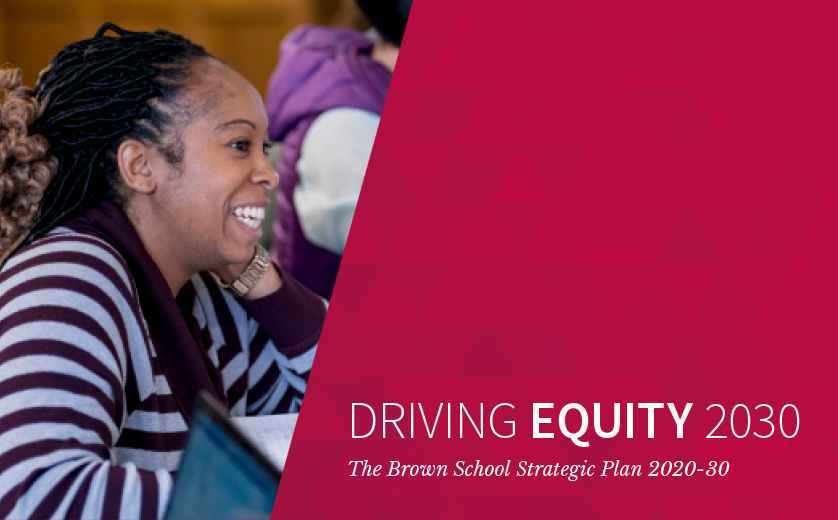Core Commitment
Impact in, for and with the St. Louis Region
Our vision of community-engaged teaching, scholarship and service is guided by an “Organization to Communities” model. This model prioritizes mutually beneficial collaborations where both community and university expertise valued, as well as community capacity-building with support for faculty, staff and students who commit their time and expertise to outreach, research, teaching and service that is reliably assessed and valued by partners.
The desired result is long-term, thriving partnerships with community-based organizations that have a track record of positive impact within the School’s local geographic priority areas.
Progress Reports
Progress Report 2022
The initial step taken by the Impact with St. Louis committee was defining the mission and vision for the Office of Impact with St. Louis.
- Vision Statement: We envision a collaborative region where the voices of St. Louis’ most impacted communities are centered in co-created, clear, and actionable plans that improve outcomes for all by eliminating systemic injustices, disparities, and inequities.
- Mission: Through community-engaged teaching, research, and service, we will co-create pathways with community-based organizations and local and regional efforts to ameliorate all racial, health, and social-economic inequities and disparities for all St. Louisans, with a specific focus on the school’s geographic priority areas: North City, North County, South City, and East St. Louis.
An additional achievement includes creating an Employee Volunteer Time Off Program with the goal of addressing the capacity building needs of community-based organizations. Led by a staff-formed subcommittee who have developed guidelines, chosen a name for the initiative (Step Up to Serve St. Louis), and outlined training processes and materials.
Goals and Objectives
Goal 1: Increase internal (staff and faculty) ability to contribute to local efforts that focus on capacity building, systemic injustice, and concerns identified by nonprofits in the School’s priority areas.
Objectives:
- Co-create internal and external structures that reduce barriers for community engagement for faculty and staff.
- Co-Create pathways with community-based organizations (DPAC, Administrative Partners and approved pilot organizations) to strengthen the infrastructure and capacity building of nonprofits in the schools priority areas.
- Build hiring and promotion standards that uphold Impact with St. Louis and SUS-STL for staff.
- Expand representation of the Brown School by including staff volunteers within the School’s priority areas at nonprofits.
- Integrate impact with St. Louis into the MSW/MPH/MSP curricula.
- Expand scope of Impact with St. Louis to focus on issues specific to strengthening the infrastructure and capacity of nonprofits in the Schools priority areas.
Goal 2: Design, bolster, and expand shared learning opportunities for faculty, staff, and community partners towards more equitable St. Louis region/to improve outcomes in the community.
Objectives:
- Blur boundaries of who are the teachers and who are taught.
- Create pathways for St. Louis community members to access educational opportunities at the Brown School.
Goal 3: Build one school, one community between the Brown School and community at a system, population, and place-based levels
Objectives:
- Co-identify how to respond to meet community needs.
- Honor community contributions including educating students, adding input to Brown School programs and policies.

“We have incredible momentum; we already are for St. Louis. But today, we must commit to utilizing everything we do as an opportunity for community outreach, cooperation, growth and well-being.”
–ANDREW D. MARTIN, WASHINGTON UNIVERSITY CHANCELLOR; FROM HIS INAUGURAL SPEECH, OCTOBER 3, 2019